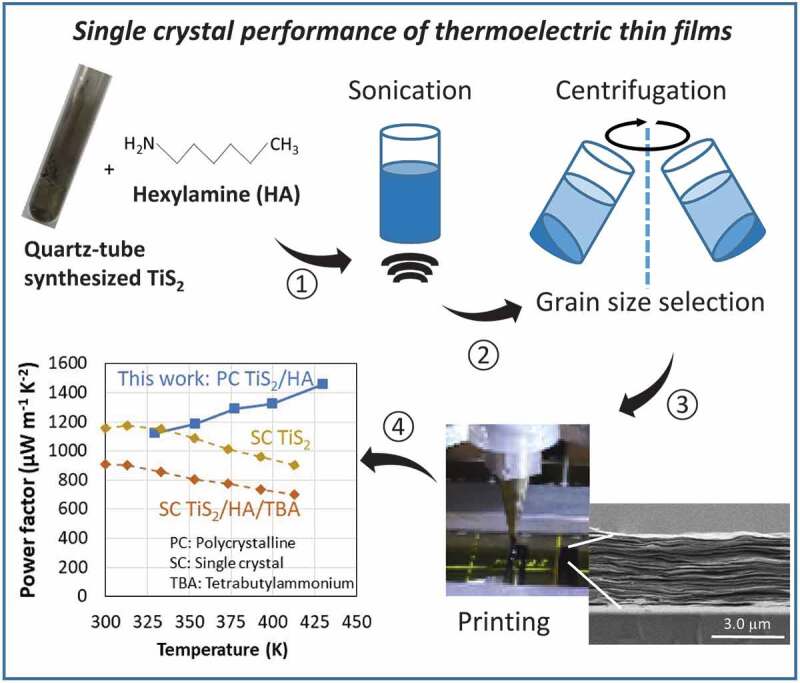- Record: found
- Abstract: found
- Article: found
High-performance flexible thermoelectric modules based on high crystal quality printed TiS 2/hexylamine

Read this article at
ABSTRACT
Printed electronics implies the use of low-cost, scalable, printing technologies to fabricate electronic devices and circuits on flexible substrates, such as paper or plastics. The development of this new electronic is currently expanding because of the emergence of the internet-of-everything. Although lot of attention has been paid to functional inks based on organic semiconductors, another class of inks is based on nanoparticles obtained from exfoliated 2D materials, such as graphene and metal sulfides. The ultimate scientific and technological challenge is to find a strategy where the exfoliated nanoparticle flakes in the inks can, after solvent evaporation, form a solid which displays performances equal to the single crystal of the 2D material. In this context, a printed layer, formed from an ink composed of nano-flakes of TiS 2 intercalated with hexylamine, which displays thermoelectric properties superior to organic intercalated TiS 2 single crystals, is demonstrated for the first time. The choice of the fraction of exfoliated nano-flakes appears to be a key to the forming of a new self-organized layered material by solvent evaporation. The printed layer is an efficient n-type thermoelectric material which complements the p-type printable organic semiconductors The thermoelectric power factor of the printed TiS 2/hexylamine thin films reach record values of 1460 µW m −1 K −2 at 430 K, this is considerably higher than the high value of 900 µW m −1 K −2 at 300 K reported for a single crystal. A printed thermoelectric generator based on eight legs of TiS 2 confirms the high-power factor values by generating a power density of 16.0 W m −2 at ΔT = 40 K.
Graphical abstract
Related collections
Most cited references43
- Record: found
- Abstract: found
- Article: not found
Two-dimensional nanosheets produced by liquid exfoliation of layered materials.
- Record: found
- Abstract: found
- Article: not found
Optimization of the thermoelectric figure of merit in the conducting polymer poly(3,4-ethylenedioxythiophene).
- Record: found
- Abstract: found
- Article: not found
